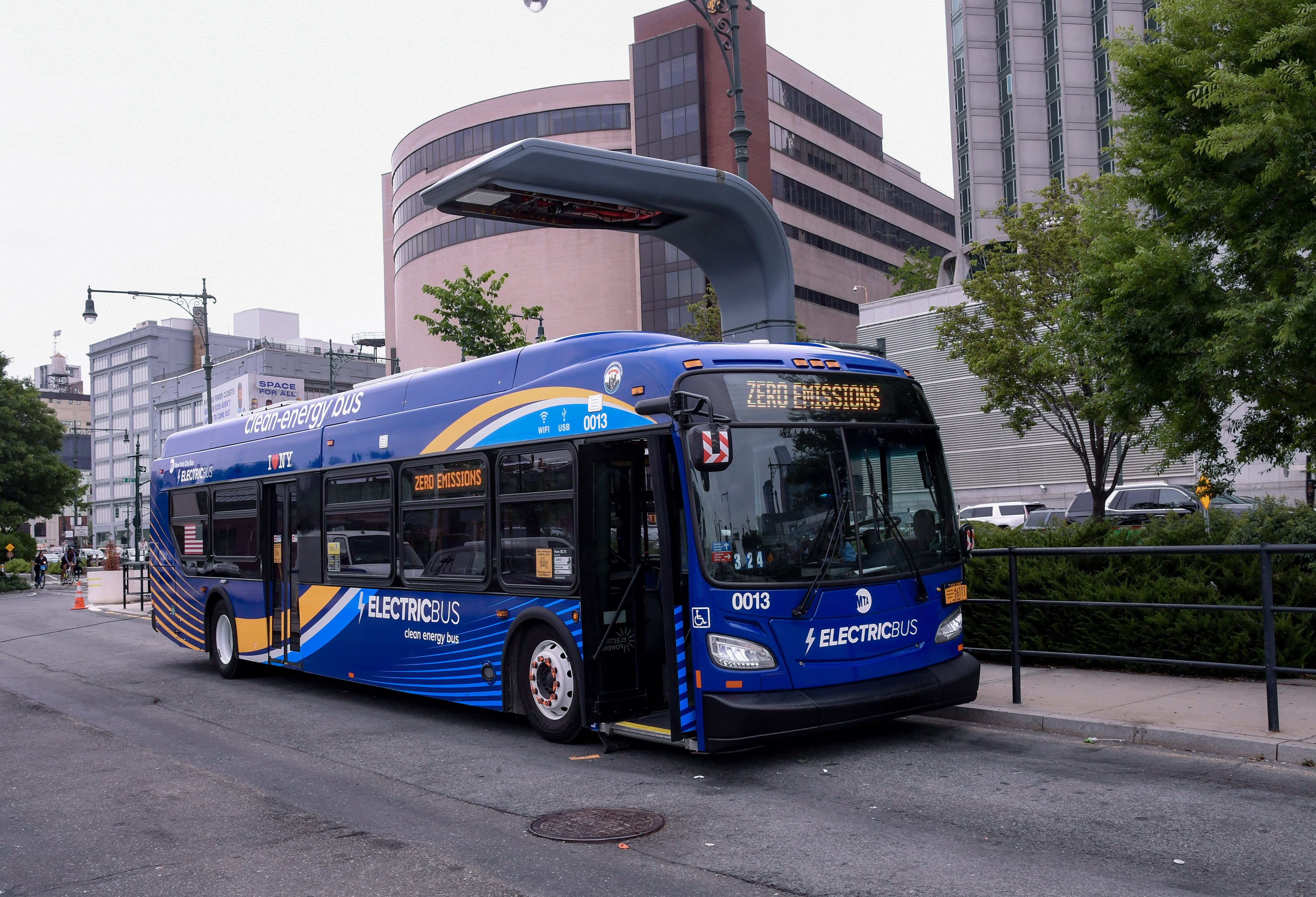Procurement Increasing by 33%, from 45 Buses to 60 Buses
Part of MTA’s Ongoing Commitment to Deploying a Zero-Emissions Bus Fleet by 2040
View Video of Today’s News Conference
View Photos From Today’s News Conference
Metropolitan Transportation Authority (MTA) officials today announced the Authority will be increasing its procurement for electric buses this year from 45 to 60 – a 33% increase, the latest step in the MTA’s ongoing mission to transform its 5,800 buses to a zero-emissions fleet by 2040.
The electric buses will operate out of each of the five boroughs with the first expected to hit the road in late 2022. The Authority already operates 25 all-electric buses, and the historic 2020-2024 MTA Capital Program includes $1.1 billion in funding to buy another 500 and build charging infrastructure at eight of the 28 depots where the MTA stores and maintains its bus fleet.
This announcement comes as the MTA finalized a $39 million agreement with the New York Power Authority to install more than 50 overhead chargers to power new electric buses that will be coming next year to four MTA bus depots. Construction is expected to begin this fall at the Charleston, East New York, Grand Avenue and Kingsbridge depots. A charger replacement at the Williamsburg Bridge Plaza – considered an “on-route” charger because buses will draw charges while they are briefly parked between runs – is part of these efforts. The on-route chargers will provide enough charge during the drivers’ rest periods to keep the bus operating for two full shifts per day. The total project is expected to take about a year to complete.
“The MTA is serious about delivering on the promise of a zero-emissions fleet by our 2040 target,” said Craig Cipriano, President of the MTA Bus Company and Senior Vice President for Buses for MTA New York City Transit. “With state and federal support and resources, we expect this program is about to take off exponentially. The MTA is working with the industry every step of the way to meet our ambitious goal.”
“This is exactly the kind of investment New York needs to build back better at this critical moment for the state and nation, and it solidifies the MTA’s status as the transit agency most dedicated to protecting the environment,” said Janno Lieber, MTA Construction and Development President. “Modernizing our infrastructure in this way will have far reaching impacts that can help address overdue challenges of social equity and climate change.”
“The New York Power Authority is pleased to support the MTA’s transition to a zero-emissions bus fleet by modernizing its electric vehicle charging infrastructure,” said Gil C. Quiniones, NYPA President and CEO. “Through this EV infrastructure investment, we are ensuring that New York City’s neighborhoods benefit from cleaner air as the state moves toward a more sustainable, carbon-free energy system.”
“While President Biden's American Jobs Plan is making bus electrification a priority, the MTA is taking major steps toward fulfilling its historic goal of a zero-emissions fleet by 2040,” said Julie Tighe, President of the New York League of Conservation Voters. “More zero-emission buses, as well as charging infrastructure, will reduce emissions and improve air quality, especially in environmental justice communities that host a disproportionate number of bus depots. Thank you to the MTA for your vital leadership in increasing your e-transit bus investments for 2021.”
In NYC, approximately 75% of MTA bus depots are located in low/moderate-income communities, and transit bus routes run disproportionately through these neighborhoods. Conversion to a zero-emissions fleet will help to significantly improve air quality and public health by reducing health outcomes like asthma.
The MTA removes 17 million metric tons of carbon emissions from the air per year by providing public transit services as an alternative to personal vehicle use, and a zero-emissions bus fleet would further reduce New Yorkers’ carbon footprint. Zero-emissions propulsion technology also results in quieter operations in addition to the benefits of zero tail-pipe emissions, which make it ideal for operating vehicles in densely populated areas such as New York City. All-electric buses use an electric motor powered by a battery pack, and their propulsion systems recapture energy normally wasted in braking. Articulated buses, which are higher-capacity 60-foot-long buses used on Select Bus Service as well as on higher ridership routes, are ideal for electrification when used in densely populated urban areas where carbon emissions and traffic noise are public concerns.
